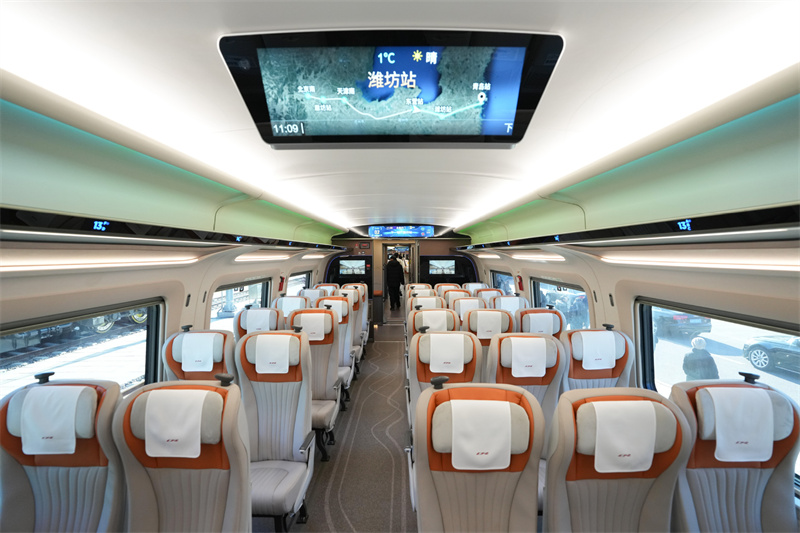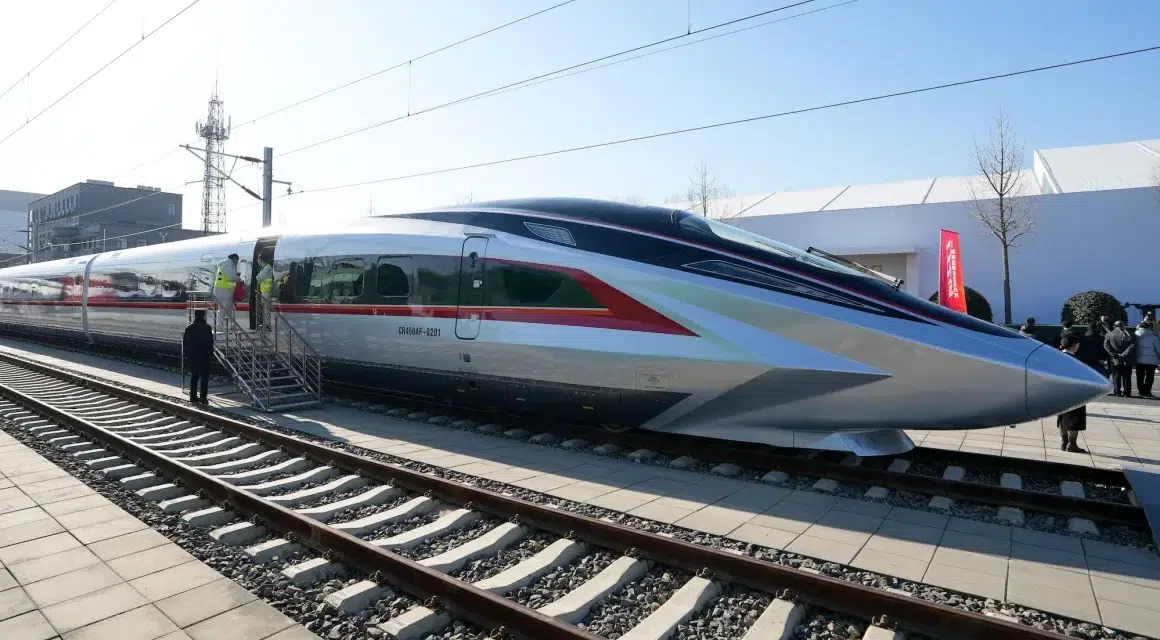China has recently unveiled the prototype of its latest high-speed train, the CR450, which is poised to become the world’s fastest commercial train upon completion. Designed to operate at speeds of up to 400 kilometres per hour (approximately 250 miles per hour), the CR450 aims to significantly reduce travel times across China’s vast railway network.
The development of the CR450 began in 2018, with the objective of consolidating China’s leadership in railway technology. The prototype was showcased in 2024, achieving testing speeds of up to 450 kilometres per hour (about 280 miles per hour). This new model incorporates several technological advancements, including a 22% reduction in operational resistance and a lighter design, enhancing both efficiency and performance.

The CR450 is equipped with innovative features such as electric induction brakes, a traction system with permanent magnets, and active pantograph control. These advancements contribute to its impressive speed capabilities and operational efficiency.
Advertisement
Currently, China’s high-speed rail network operates at a maximum cruising speed of 350 kilometres per hour (approximately 217 miles per hour). The introduction of the CR450 is expected to increase this to 400 kilometres per hour, further cementing China’s position at the forefront of high-speed rail travel.
In addition to the CR450, China is also advancing the development of a magnetic levitation (maglev) train capable of reaching speeds up to 621 miles per hour. This maglev train utilises magnetic repulsion to levitate and propel the train, reducing friction and allowing for higher speeds. Currently, only a few countries, including China, South Korea, and Japan, operate maglev trains.
These developments underscore China’s commitment to revolutionising rail travel, offering faster, more efficient, and technologically advanced transportation options for passengers.














